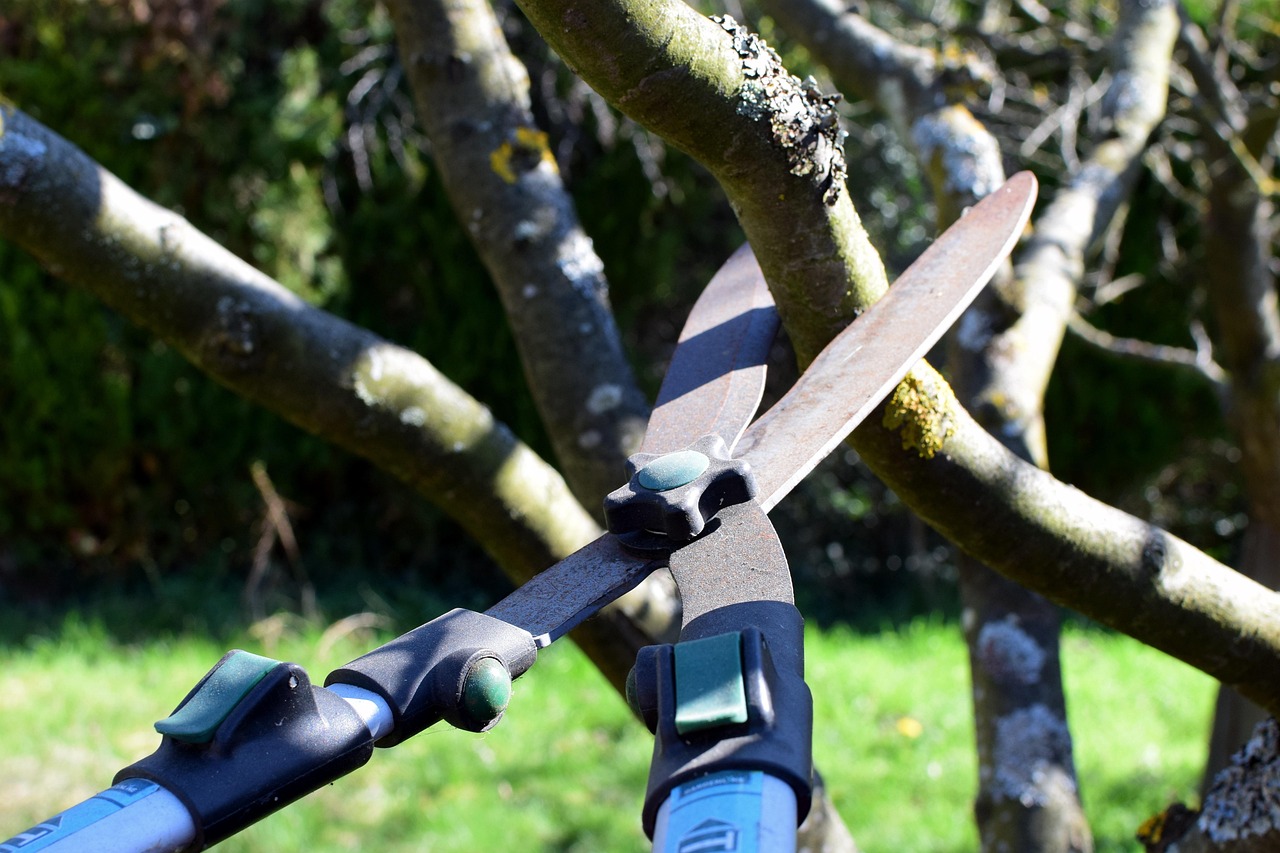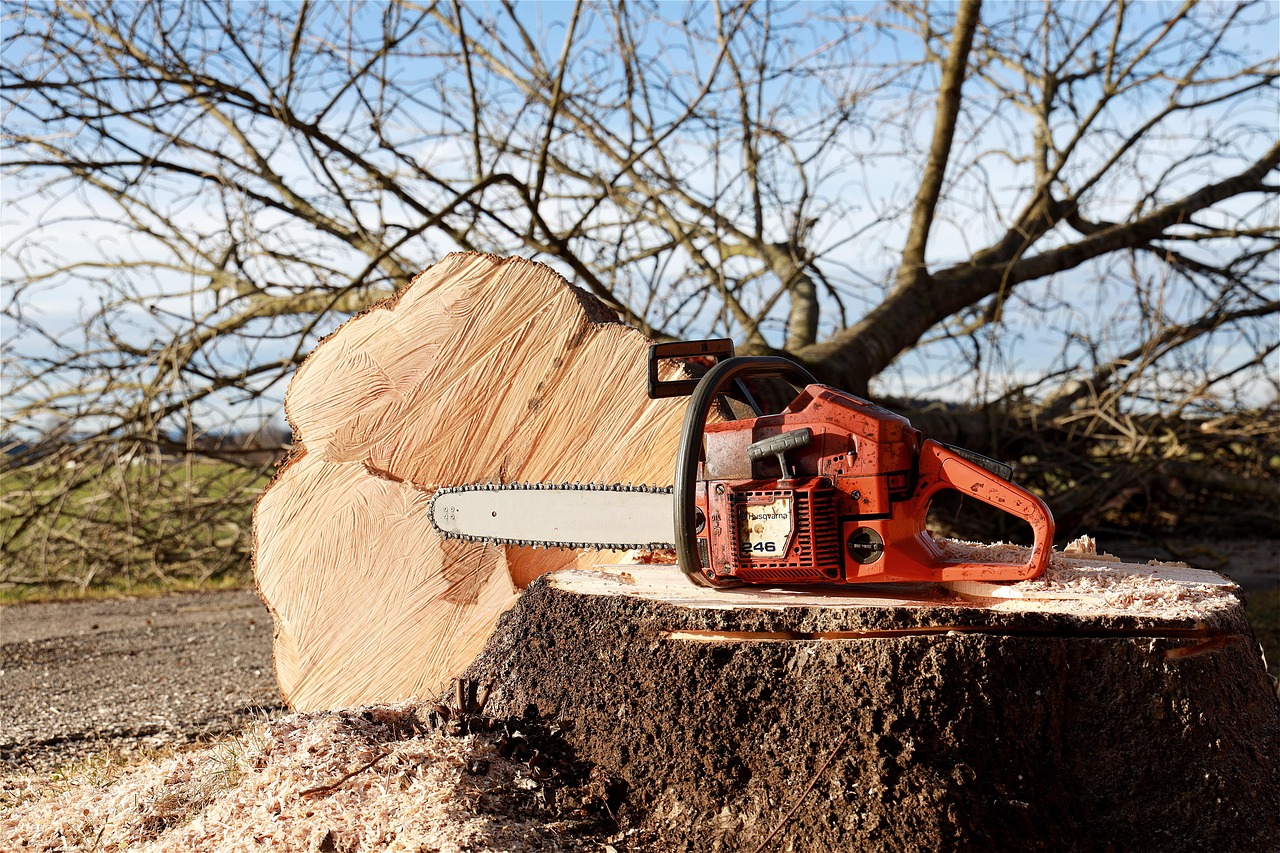Pruning young citrus trees in greenhouse farms is essential for promoting healthy growth, improving air circulation, and enhancing fruit production. Proper techniques help shape the trees and remove any diseased or weak branches, ensuring optimal development.
Understanding Citrus Tree Growth
Citrus trees are popular for their fragrant flowers and delicious fruits. They thrive in warm climates, making them ideal for greenhouse cultivation. Young citrus trees require specific care to ensure they develop strong structures and yield quality fruit. Pruning plays a crucial role in this process.

When young citrus trees are pruned correctly, they can grow more vigorously. The practice involves selectively removing parts of the tree to encourage healthy growth patterns. This not only helps in shaping the tree but also improves light penetration and air circulation. Both factors are vital for reducing the risk of diseases.
Benefits of Pruning Young Citrus Trees
Pruning offers several benefits for young citrus trees. Here are some of the key advantages:
- Encourages Strong Structure: Pruning helps develop a sturdy framework, which supports future growth and fruit production.
- Improves Air Circulation: Removing excess foliage enhances airflow around the tree. This helps prevent fungal infections.
- Enhances Light Penetration: Proper pruning allows sunlight to reach all parts of the tree, promoting even growth.
- Increases Fruit Quality: With better light and airflow, the quality of the fruit improves significantly.
- Reduces Pest Issues: A well-pruned tree is less likely to harbor pests and diseases.
When to Prune Young Citrus Trees
The timing of pruning is crucial for young citrus trees. The best time to prune is during the dormant season, typically in late winter or early spring. This allows the tree to recover before the growing season begins. However, some light pruning can also be done during the growing season to remove dead or damaged branches.

Key Factors Influencing Pruning Timing
Several factors can influence the timing of pruning young citrus trees:
- Tree Age: Younger trees may require more frequent pruning to establish a strong framework.
- Growth Rate: Fast-growing varieties may need more regular attention compared to slower-growing types.
- Environmental Conditions: Weather conditions can impact when it is safe to prune without harming the tree.
Essential Pruning Techniques
Effective pruning requires knowledge of specific techniques that cater to the needs of young citrus trees. Below are some essential methods to consider:
Crown Thinning
Crown thinning involves selectively removing stems and branches throughout the tree’s canopy. This technique reduces density and encourages better light penetration and airflow.

Crown Raising
Crown raising focuses on removing lower branches. By doing so, it allows for easier access to the tree’s center and encourages upward growth.
Crown Reduction
Crown reduction involves cutting back the top of the tree. This method helps control height and encourages lateral growth, which can lead to a bushier tree.
Removing Dead or Diseased Wood
Regularly inspect trees for any dead or diseased branches. Removing these as soon as they are spotted prevents the spread of disease and promotes healthy growth.

Tools Needed for Pruning
Using the right tools is essential for effective pruning. Here are some common tools recommended for young citrus tree pruning:
| Tool | Description | Use |
|---|---|---|
| Hand Pruners | Small, sharp scissors-like tools. | Ideal for cutting small branches and stems. |
| Loppers | Larger pruners with long handles. | Used for thicker branches that are hard to reach. |
| Saw | A small pruning saw for larger branches. | Effective for removing bigger limbs safely. |
| Gloves | Protective gear for hands. | Keeps hands safe from thorns and cuts. |
Before starting the pruning process, ensure that all tools are clean and sharp. This helps make clean cuts that promote faster healing for the tree.
Signs That Pruning is Needed
It is important to recognize when young citrus trees need pruning. Some signs include:
- The presence of dead or diseased branches.
- A dense canopy that blocks sunlight from reaching lower branches.
- A tree that appears unbalanced or misshapen.
- Pests or insects hiding in thick foliage.
By monitoring these signs closely, growers can maintain healthier young citrus trees and maximize their potential yield. Proper pruning practices contribute significantly to the overall health and productivity of citrus crops grown in greenhouse environments.
Pruning Techniques for Different Citrus Varieties
Different citrus varieties may require specific pruning techniques to achieve optimal growth and fruit production. Understanding the unique characteristics of each variety can help growers tailor their pruning practices. Below are some common citrus varieties and recommended pruning approaches.
Sweet Orange (Citrus sinensis)
Sweet oranges are one of the most popular citrus varieties. They benefit from a balanced pruning approach to maintain their shape and promote fruiting. Key techniques for sweet oranges include:
- Thinning: Remove excess shoots to improve light penetration and airflow.
- Heading Cuts: Trim the tops of branches to encourage bushy growth.
- Selective Removal: Cut back any weak or crossing branches to enhance overall structure.
Lemon (Citrus limon)
Lemon trees often have a vigorous growth habit. Pruning should focus on controlling size and shape. Suggested techniques include:
- Crown Shaping: Regularly shape the crown to maintain a manageable height.
- Removing Suckers: Eliminate suckers that grow from the base of the tree.
- Light Pruning: Perform light pruning throughout the growing season to manage growth without stressing the tree.
Lime (Citrus aurantiifolia)
Lime trees tend to be smaller and need less severe pruning. Focus on maintaining their natural form while ensuring good air circulation. Recommended practices include:
- Minimal Thinning: Only remove branches that are dead or diseased.
- Encouraging Open Canopy: Lightly prune to keep the center open for sunlight.
- Regular Maintenance: Conduct maintenance pruning as needed to maintain size.
The Pruning Process: Step-by-Step Guide
To effectively prune young citrus trees, following a systematic process can lead to better outcomes. Here’s a step-by-step guide:
Step 1: Assess the Tree
Begin by assessing the overall condition of the tree. Look for signs of disease, dead branches, and areas that may need thinning. Understanding the tree’s needs will guide your pruning decisions.
Step 2: Prepare Your Tools
Ensure all tools are clean and well-maintained. Having sharp tools will facilitate smooth cuts, which are crucial for tree health. Gather the necessary tools as mentioned previously.
Step 3: Start with Dead or Diseased Wood
Begin pruning by removing any dead or diseased branches first. This helps prevent disease spread and promotes healthy growth. Make clean cuts just above the branch collar, where the branch connects to the trunk.
Step 4: Thin Out Excess Growth
Next, thin out excessive growth by removing crowded branches. Aim to create an open structure that allows light to reach all parts of the tree. Focus on maintaining a balanced shape as you prune.
Step 5: Shape the Tree
After thinning, focus on shaping the tree. Use heading cuts to promote bushiness or crown raising techniques to enhance access. Always step back periodically to assess the overall shape.
Step 6: Clean Up
Once pruning is complete, clean up the area around the tree. Remove any cut branches and debris to reduce pest habitats and improve aesthetics.
Common Mistakes in Pruning Citrus Trees
Avoiding common mistakes can significantly enhance the effectiveness of your pruning efforts. Here are some pitfalls to watch out for:
- Over-Pruning: Removing too much foliage can stress the tree and reduce fruit production.
- Poor Timing: Pruning at the wrong time can hinder growth and cause damage.
- Neglecting Tools: Using dull or dirty tools can injure trees and allow disease to enter through cuts.
- Ignoring Tree Structure: Pruning without considering the tree’s natural structure can lead to weak growth patterns.
Caring for Pruned Citrus Trees
After pruning, it is vital to provide proper care to help young citrus trees recover and thrive. The following practices can support their health:
- Watering: Ensure trees receive adequate water, especially during dry periods, to help them recover from pruning stress.
- Nutrients: Apply a balanced fertilizer after pruning to promote healthy regrowth.
- Pest Monitoring: Keep an eye out for pests that may target stressed trees, and take action if needed.
- Mulching: Apply mulch around the base of the tree to retain moisture and suppress weeds.
Caring for pruned citrus trees ensures they recover quickly and continue to grow vigorously, setting a solid foundation for fruitful yields in the future.
Common Diseases and Pests Affecting Citrus Trees
Young citrus trees are susceptible to various diseases and pests, which can have a detrimental effect on their growth and fruit production. Understanding these threats is crucial for effective management and pruning practices. Below are some of the most common pests and diseases that affect citrus trees in greenhouse environments.
Citrus Canker
Citrus canker is a bacterial disease that causes lesions on leaves, stems, and fruit. It can lead to premature leaf drop and fruit drop, significantly impacting yield. Symptoms include:
- Lesions: Yellowish, raised spots on leaves and fruit.
- Leaf Drop: Affected trees may shed leaves excessively.
- Fruit Drop: Fruits may drop prematurely before reaching maturity.
Greening Disease (Huanglongbing)
Greening disease, also known as Huanglongbing (HLB), is one of the most severe threats to citrus trees. It is caused by a bacterium spread by the Asian citrus psyllid. Symptoms include:
- Yellowing Leaves: Leaves may show mottled yellow patterns.
- Stunted Growth: Trees may exhibit reduced growth rates.
- Misshapen Fruit: Fruits may be small, misshapen, or drop prematurely.
Pests to Watch For
Pests can weaken young citrus trees and create pathways for diseases. Key pests include:
- Asian Citrus Psyllid: This insect transmits greening disease and can weaken the tree.
- Citrus Leafminer: This pest mines through leaves, causing damage and reducing photosynthesis.
- Spider Mites: These tiny pests can cause significant stress to trees by sucking sap from leaves.
Integrated Pest Management (IPM) Strategies
Implementing integrated pest management (IPM) strategies can help manage pests and diseases while minimizing harm to beneficial organisms. Here are some effective IPM strategies:
- Cultural Practices: Maintain healthy trees through proper watering, nutrition, and pruning to reduce stress.
- Biological Control: Introduce natural predators, such as ladybugs and lacewings, to control pest populations.
- Pesticides: Use pesticides judiciously, selecting options that are less harmful to beneficial insects.
- Monitoring: Regularly inspect trees for signs of pests or disease, allowing for early intervention.
The Role of Fertilization in Citrus Tree Health
Proper fertilization is essential for young citrus trees to thrive. Nutrient management can enhance growth and improve resilience against pests and diseases. Here are some key considerations for fertilizing young citrus trees:
Nutrient Requirements
Citrus trees require a balanced supply of nutrients to grow robustly. Key nutrients include:
- Nitrogen (N): Promotes vigorous vegetative growth and green foliage.
- Phosphorus (P): Supports root development and flowering.
- Potassium (K): Enhances fruit quality and overall tree health.
Types of Fertilizers
Selecting the right type of fertilizer is crucial for young citrus trees. Options include:
- Granular Fertilizers: Slow-release options provide a steady supply of nutrients over time.
- Liquid Fertilizers: Fast-acting solutions that can quickly address nutrient deficiencies.
- Organic Fertilizers: Derived from natural sources, these options improve soil health over time.
Watering Practices for Optimal Growth
Watering is a critical aspect of caring for young citrus trees. Proper watering practices can prevent stress and promote healthy growth. Here are some guidelines:
Watering Frequency
The frequency of watering should depend on several factors, including the tree’s age, size, and environmental conditions. General recommendations include:
- Young Trees: Water deeply once or twice a week during dry spells.
- Mature Trees: Adjust frequency based on rainfall and soil moisture levels.
Irrigation Methods
Selecting the right irrigation method ensures efficient water use:
- Drip Irrigation: Delivers water directly to the root zone, minimizing waste.
- Soaker Hoses: Provide gradual watering to the soil surface.
- Sprinkler Systems: Can be used but should be monitored to avoid excessive moisture on foliage.
Soil Management for Citrus Trees
The health of young citrus trees is strongly influenced by soil conditions. Proper soil management promotes root development and nutrient uptake. Key practices include:
- Soil Testing: Conduct regular tests to determine pH levels and nutrient content.
- Amending Soil: Incorporate organic matter to improve soil structure and fertility.
- Aeration: Ensure adequate soil aeration to promote healthy root systems.
A well-managed soil environment will support the growth of young citrus trees and enhance their resilience against environmental stresses. By focusing on proper care, monitoring for pests and diseases, and maintaining optimal growing conditions, growers can ensure the success of their citrus cultivation efforts in greenhouse settings.
Additional Considerations for Pruning Young Citrus Trees
As you continue to care for young citrus trees, there are several additional considerations that can enhance their growth and productivity. These factors are often overlooked but play a vital role in ensuring the long-term health of the trees.
Timing of Pruning
While the dormant season is generally the best time for pruning, the specific timing may vary based on regional climate and the growth stage of the trees. Observing the trees closely can help determine the optimal timing for pruning interventions. Consider the following:
- Seasonal Changes: In warmer climates, light pruning may be beneficial during the growing season to control excessive growth.
- Flowering Period: Avoid pruning during flowering to prevent reducing fruit set.
- Post-Harvest Care: Conduct pruning after harvest to promote new growth for the next season.
Environmental Factors
The environment in which citrus trees are grown significantly impacts their health and growth. Be mindful of the following factors:
- Temperature: Citrus trees thrive in warm temperatures. Protect young trees from extreme cold or heat.
- Humidity: Maintain appropriate humidity levels in greenhouse settings to prevent stress on trees.
- Sunlight Exposure: Ensure that trees receive adequate sunlight, as it is crucial for photosynthesis and overall health.
Organic vs. Synthetic Practices
Deciding between organic and synthetic farming practices can influence how young citrus trees are pruned and maintained. Organic practices focus on natural amendments and pest control methods, while synthetic options often involve chemical fertilizers and pesticides. Weighing the pros and cons of each method can help growers align their practices with their values and market demands.
- Organic Practices: Promote soil health and biodiversity but may require more labor and time to see results.
- Synthetic Practices: Allow for quicker results and easier management but can lead to soil depletion if not managed properly.
Final Thoughts
Successfully managing young citrus trees through proper pruning, care, and environmental considerations is vital for achieving healthy growth and fruitful yields. By understanding the specific needs of different citrus varieties, employing best practices in pruning techniques, and monitoring for diseases and pests, growers can set a strong foundation for their citrus crops.
The combination of effective pruning, vigilant pest management, optimal fertilization, and thoughtful watering will lead to robust trees that can withstand environmental stresses and produce high-quality fruit. Furthermore, embracing sustainable practices—whether organic or integrated—can contribute to a healthier ecosystem within the greenhouse.
In conclusion, cultivating young citrus trees in greenhouse farms requires a holistic approach that incorporates careful attention to detail, ongoing education, and adaptability to changing conditions. By implementing these strategies, growers can look forward to thriving citrus orchards that yield bountiful harvests for years to come.
